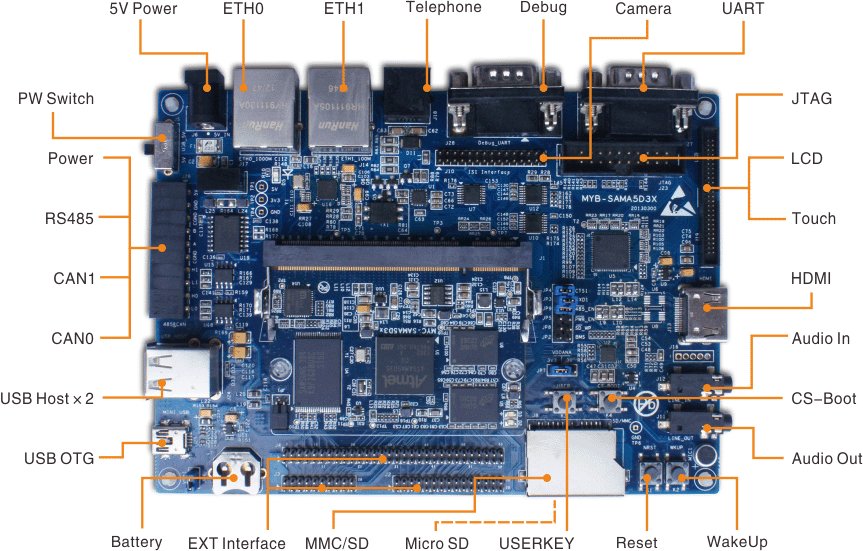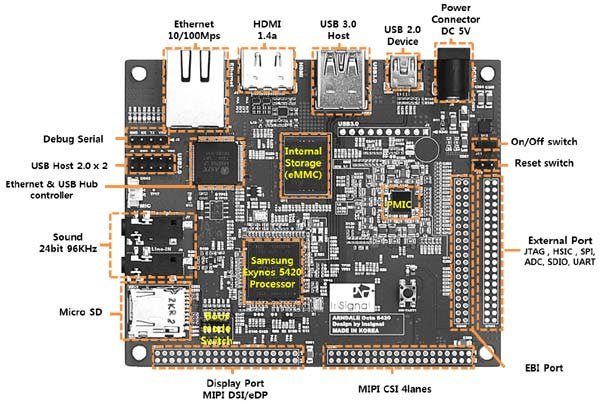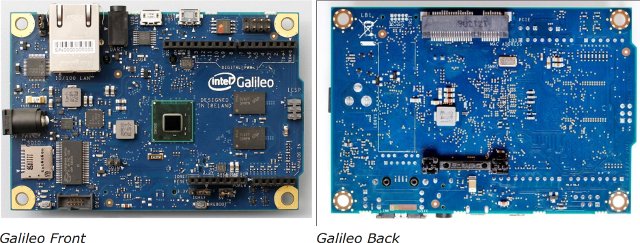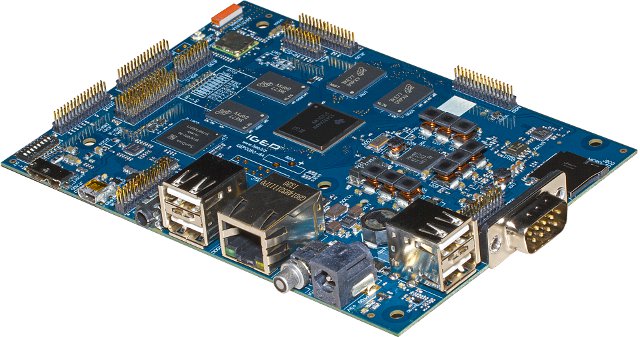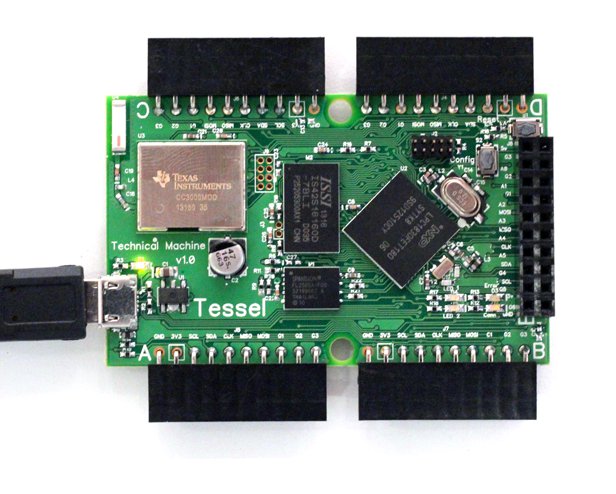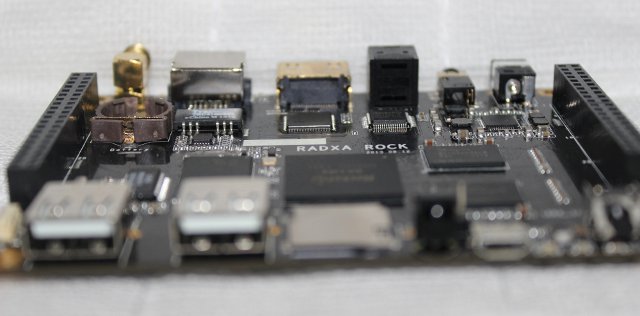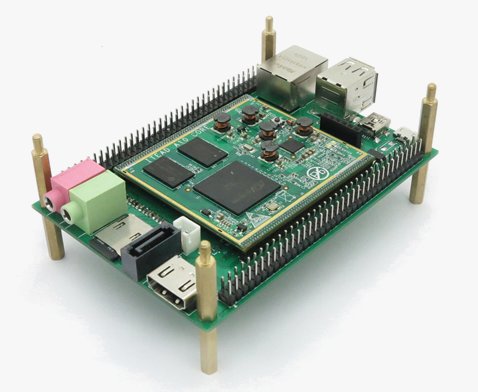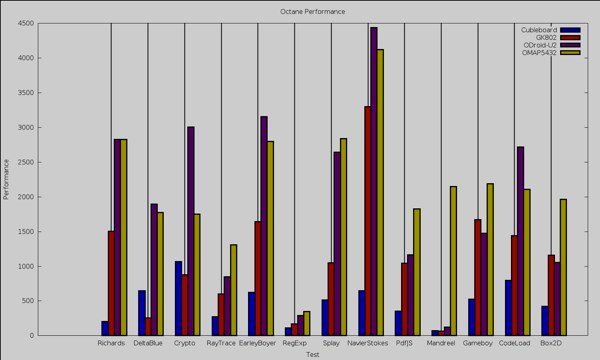MYIR Tech, a company based in Shenzhen, and ARM Connected Community Member, has recently made available MYD-SAMA5D3X boards powered by Atmel ATSAMA5D3 ARM Cortex-A5 embedded MPU. Like many development boards, thise are composed of a baseboard coupled by a 200-pin SO-DIMM computer-on-module (CoM) featuring one of the four Atmel SAMA5D3 processor: SAMA5D31, SAMA5D33, SAMA5D34 and SAMA5D35. The boards all feature 512MB DDR2 SDRAM, 256MB Nand Flash, 16MB Nor Flash and 4MB Data Flash on board. Typical applications developed with these boards include control panel/HMI, smart grid, medical and handheld terminals, outdoor GPS, DECT (digital enhanced cordless telecommunications) phones, and more. MYD-SAMA5D3X boards specifications: Processor – Atmel SAMA5D31, SAMA5D32, SAMA5D34 or SAMA5D35 Cortex A5 up to 536MHz with 128KB of SRAM and 160KB of ROM System Memory – 512MB DDR2 SDRAM Storage – 256MB NAND Flash, 4MB Data Flash, 16MB Nor Flash, one MMC/SD card slot, and one microSD card slot Peripheral […]
$179 Arndale Octa Developement Board Gets an Upgrade to Exynos 5420 big.LITTLE SoC
Hardkernel ODROID-XU may have been the first low cost big.LITTLE development board, but since it’s using Exynos 5410 SoC, big.LITTLE processing is limited to cluster migration that means using A15 cores or A7 cores. Insignal’s Arndale Octa was also initially announced with Exynos 5410, but the good news is that we’ll soon get a fully functional big.LITTLE development board as Arndale Octa has been upgraded to Exynos 5420 Octa-core SoC. This board will support both In-Kernel Switching (IKS) and Global Task Scheduling (GTS) implementations, and be officially supported by Linaro like the first Arndale board based on Exynos 5250 dual core Cortex A15. Here are the specifications of the board (derived by me from several pages, and pictures): SoC – Samsung Exynos 5420 octa core SoC with 4x Cortex A15 cores up to 1.8 GHz, 4x Cortex A7 cores up to 1.3 GHz in big.LITTLE configuration, and ARM Mali T-628 […]
$69 Intel Gallileo Development Board Combines x86 Processor and Arduino Compatibility
After UDOO, a Linux development board powered by Freescale i.MX6 ARM Cortex 9 processor and an Atmel SAM3U MCU for Arduino compatibility, here’s another single board computer (SBC) that both runs Linux, and is claimed to be software and hardware compatible with shields designed for Arduino Uno R3: Intel Gallileo. Instead of using two ARM processors, the board is powered by Intel Quark SoC X1000, a 32-bit Pentium class SoC, that handles both Linux and I/Os. Intel Galileo Specifications: SoC – Intel Quark SoC X1000 @ 400MHz with 16 KBytes on-die L1 cache, 512 KBytes of on-die embedded SRAM, single thread, single core, constant speed, ACPI compatible CPU sleep states supported, and integrated Real Time Clock (RTC). Max TDP: 2.2W. System Memory – 256 MByte DRAM Storage – 8 MByte Legacy SPI Flash for bootloader and sketch + 11 KByte EEPROM + optional microSD card (Up to 32GB) Connectors: 10/100 […]
ISEE Introduces IGEPv5 Board Powered by TI OMAP5432 Processor
ISEE made a call to developers late 2012, asking them what features they’d like for an OMAP5 board. IGEPv5 board is now nearly completed, and people can register their interest to receive the development board in January 2014. IGEPv5 Specifications: SoC – Texas Instruments OMAP5432 dual core Cortex A15 up to 2GHz with POWERVR SGX544 dual-core GPU, and TMS320DMC64x DSP System Memory – 2GB DDR3 RAM expandable to 4GB Storage – Up to 32GB eMMC i-NAND, microSD socket, and mSATA2.0 Interface Connectivity: Ethernet controller: 1 x 10/100/1000Mbps Gigabit Ethernet PHY controler (RJ45) Wifi: 802.11 b/g/n Bluetooth v4.0 Antenna: Internal Wifi/BT Antenna USB – 1 x USB 3.0 OTG (miniAB receptable), 4 x USB 2.0 Host (Type A receptable) Video – 1 x microHDMI (Video + Audio) Audio – 1 x Stereo Audio In (Stereo minijack), 1 x Stereo Audio Out (Stereo minijack) Debugging – DEBUG SERIAL CONSOLE via RS232 (DB9), […]
Tessel ARM Cortex-M3 MCU Board Brings Hardware Hacking to Web Developers with JavaScript and Node.js
People who are proficient with JavaScript or web technologies may not be completely comfortable with programming MCU in assembler and/or C programming language. Node.js, written in JavaScript, seems to be quite popular this days for diverse projects, but technical.io has decided to design a board called Tessel, powered by a Cortex M3 MCU. that can be fully programmed with JavaScript/Node.js. Tessel hardware specifications: MCU – NXP LPC1830 ARM Cortex-M3 @ 180mhz System Memory – 32MB SDRAM Storage – 32MB Flash Connectivity – Wi-Fi via TI CC3000 Expansion – 16-pin GPIO bank for prototyping Power – Micro USB or battery The board is said to be compatible with 1000’s of Node.js modules from NPM, can be programmed via USB or Wi-Fi using your own IDE, and support Tessel modules, as well as Arduino Shields. There are two (price) classes for Tessel modules: Class A: Relay — turn devices on and off (up […]
Radxa Rock Development Boards with Rockchip RK3188 Are Available for Developers Now
As previously mentioned, work was in progress to design development boards based on Rockchip processors. Radxa Rock and Radxa Rock Lite, 2 boards powered by Rockchip RK3188, are now available to early developers, and the final versions will soon be broadly available. Here are the boards specifications: SoC – Rockchip RK3188 ARM Cortex-A9 quad core @ 1.6Ghz + Mali-400 MP4 GPU System Memory – 2GB DDR3 @ 800Mhz (1GB DDR3 @ 800Mhz for Lite version) Storage – 8GB Nand Flash (4GB Nand Flash for Lite version) + micro-SD SDXC up to 128GB Video Output – HDMI 1.4 up to 1080p@60hz, andAV output Connectivity: 10/100M Ethernet port WIFI 150Mbps 802.11b/g/n with antenna Bluetooth – Bluetooth 4.0 (Not in Lite version) Audio I/O – Audio S/PDIF, headphone jack USB – 2x USB 2.0 host port, micro USB OTG Debugging – Serial Console Misc – IR sensor, power key, recovery key, reset key, […]
$59 Iteaduino Plus ARM Linux Board Features Raspberry Pi and Arduino Compatible Headers
Iteaduino Plus is a development platform designed by ITEAD studio, a Shenzhen based company, powered by AllWinner A10 with 1GB RAM, a micro SD card slot, expansion header, etc… Overall features are very similar to the Cubieboard, but the platform is comprised of a baseboard and a CPU module. The baseboard features a 26-pin GPIO header compatible with the one on the Raspberry Pi, and you can add an expansion board to connect Arduino Shields. Iteaduino Plus specifications: SoC – AllWinner A10 Cortex A8 @ 1GHz with Mali400 GPU System Memory – 1GB DDR3 @480MHz Storage – 1x micro SD slot, 1x SATA Video Output – HDMI Connectivity – 10/100M Ethernet USB – 2x USB Host, 1x USB OTG Audio – 3.5mm Audio in and out jacks Expansion headers (see pin assignment) 2x 2×36-pin (Total 144, but not all used) – I2C, SPI, RGB/LVDS, CSI/TS, FM-IN, ADC, CVBS, VGA, SPDIF-OUT, […]
Texas Instruments OMAP5432 EVM Benchmarked Against ODROID-U2, BeagleBone Black, GK802… and an Intel Core i7-2600K based PC
Texas instruments and SVTronics announced an OMAP5 evaluation board a couple of months ago. The board features OMAP5432 dual Cortex A15, dual Cortex M4 SoC, 2GB RAM, a 4GB eMMC module, USB 3.0, SATA and more. SVTronics sent a board to Linux.com, where they wrote a short review, followed by an article benchmarking the OMAP5 EVM against AllWinner A10, Freescale i.MX6, Exynos 4412 Prime, and TI Sitara platforms, namely Cubieboard, GK802, ODROID-U2, and BeagleBone Black, all running Linux. Ben Martin, the writer, also benchmarked the board against a Linux PC powered by an Intel Core i7-2600K processor (4 cores, 8 thread, clocked at 3.4GHz, with a turbo frequency up to 3.8GHz). The board used was an early version, clocked at 800MHz, and later in September, all boards will be clocked at 1.5Ghz, so for benchmarks that stress the CPU, you could expect almost double the performance. With that in mind, […]


